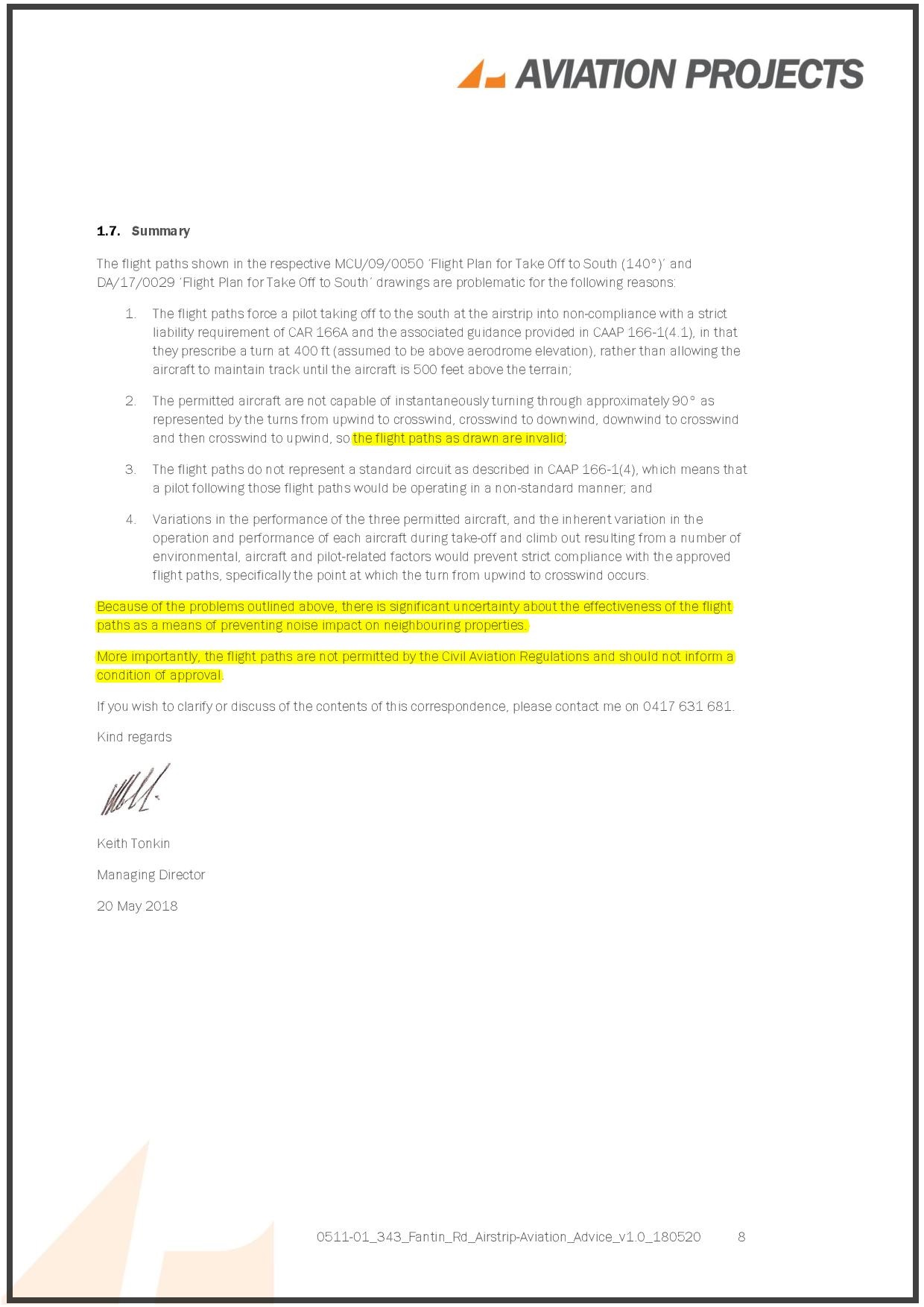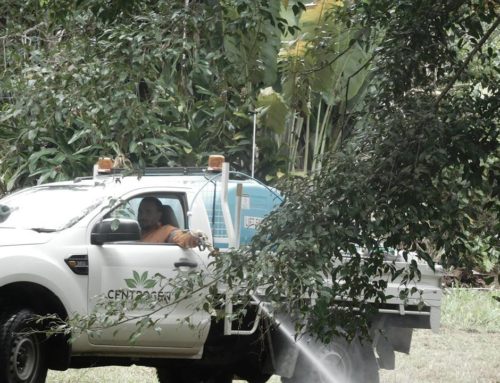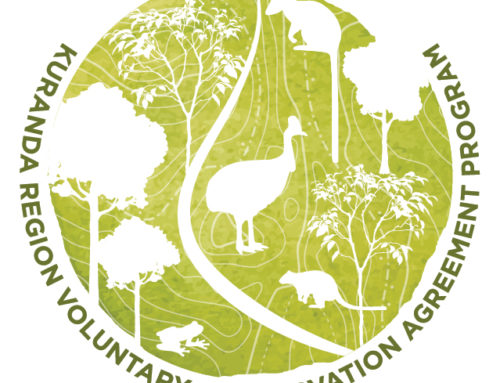
Update 24 May 2018
The development application was approved in the MSC meeting 21 March 2018.
Three Councillors voted against and four in favor of it, but not before Cr Angela Toppin put in an amendment, to change the maximum number of flights from 6 to 1 a day. Thank you Cr Nipper Brown, Lenore Wyatt and Kevin Davies for thinking of the community and voting against the development application.
The applicant is currently negotiating conditions and asking for a max of three flights a day. The matter is due to be decided in the 20 June Council meeting.
However since the initial approval the circumstances have changed somewhat.
We have now been advised in writing by an aviation expert, that in the initial approval for an aircraft facility MCU/09/0050 Item 1- Decision Notice- MCU090050- English, which underwent impact assessment, the only Council approved take off flight plans which also have to be adhered to substantially are not permitted by Civil Aviation Regulations and are invalid. In fact the pilot would most likely commit an offence flying them. It is a given that the take off flight plans, rather than a mowed strip of grass(airstrip), need to be assessed for possible impacts on amenity for example. Absent of a legal Council approved take off flight plan, the original aircraft facility approval should be invalid.
The new application DA/17/0029 DA170029 – Decision Notice, merely asking for more flights, is relying on an existing approved aircraft facility and does nothing to fix the predicament explained above. We trust Council will do the right thing by the community, refuse the application and also cancel the original aircraft facility approval.
This allows the applicant to start again and reapply for an aircraft facility, this time following proper process. This will give Council a chance to properly assess the impacts of an aircraft facility situated on a 73.6 hectare property and see if it is possible to condition an approval to minimise its impacts on the surrounding area to an for the community acceptable level.
Summary aviation expert advice
A development application has been lodged to increase the 52 flights a year permitted from the Koah airstrip to up to 6 flights a day and up to 365 flights a year. Up to 13 pilots would be able to use the aircraft facility.
The existing facility has already proven that it is not compatible with the quiet rural amenity of Koah.
A number of conditions put in place in the initial development approval to protect the community from negative impacts of the facility were not adhered to.
It has become apparent that conditions in regards to number of flights, type of aircraft and take off flight path are difficult to control/enforce.
Controlling how many pilots use the aircraft facility will be equally difficult.
The normal background noise level in Koah is about 39 decibel. The circling aircraft reach a noise level of up to 70 decibel and taking off aircraft create a noise of up to 97.7 decibel over neighbouring properties. A 10 decibel increase signifies the doubling of noise. An increase of around 60 decibel means that it is 64 times louder than the background noise level of the area.
An increase of 20 decibel from the back ground noise level is considered very strong and brings with it vigorous community action. https://qela.com.au/wp-content/uploads/2014/11/00_10_22Noise_Pollution_Law.pdf (Queensland Environmental Law Association/Noise Pollution and the Law)
A Community Meeting was held Thursday 23rd November at Koah Hall. Cllr Lenore Wyatt attended. Cllr Kevin Davies and Cllr Nipper Brown were unavailable and met with a small group of residents in Mareeba on Tuesday 14th. November. Cllr Angela Toppin has offered to meet about this next week. Other councillors were either not available ( Cllr Mary Graham) or have not responded ( Mayor Tom Gilmore and Cllr Alan Pederson). Requests to speak at the relevant council meeting or at a council workshop have been refused.
But more than 150 submissions were lodged against the development application.
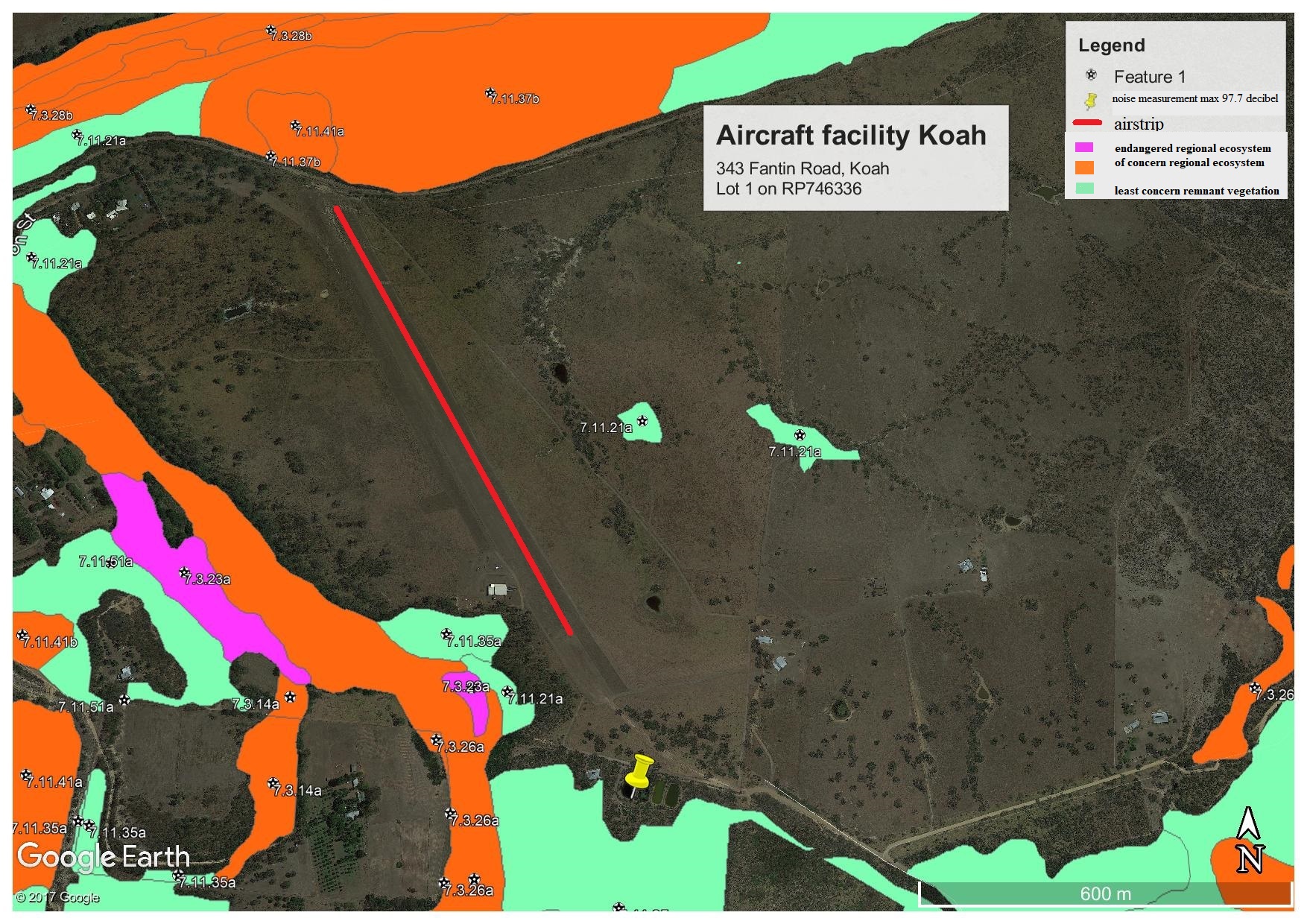
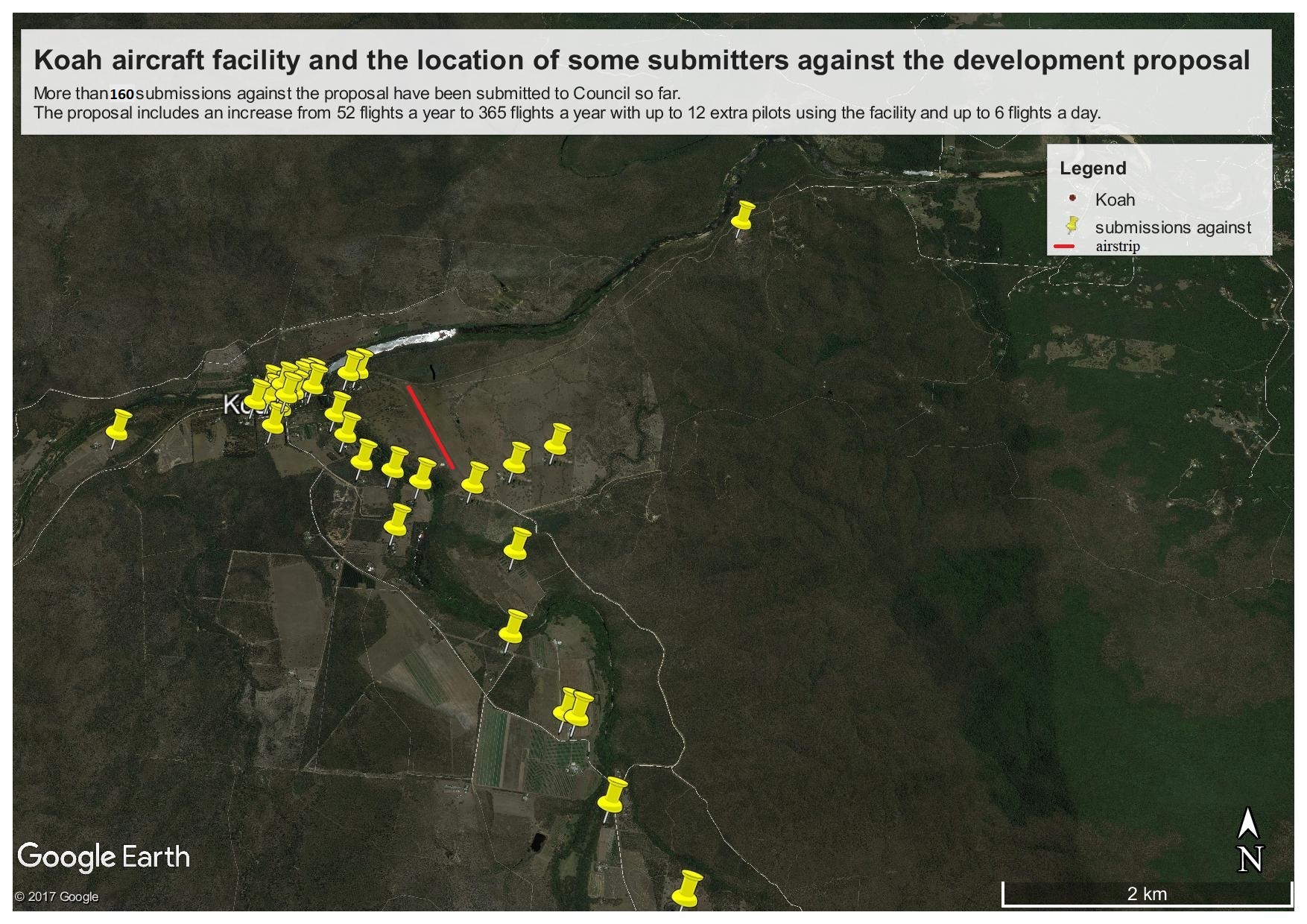
- The application has not been conditioned to minimize noise and amenity impacts.
- The proposed conditions are ineffective and meaningless.
- The analysis of the submitters’ location is misleading.
- There were 17 submissions against the application lost by Council.
- The submitted flight paths should be compulsory and no flying occur if these are not possible
Proforma Submission
I object to any intensification of usage of the airstrip but instead ask Council to enforce conditions stipulated in MCU/09/0050 that were not adhered to, such as type of aircraft in regards to noise impact, number of flights and flight paths.
The last years have shown that the airstrip has significant negative impacts on the community of Koah and is not compatible with its quiet and peaceful amenity.
I ask Council refuse the new development application on grounds that Council was so far not able to enforce conditions set out in the existing development approval and for the reasons listed below.
- The background noise level of Koah is about 39 decibel(according to the acoustic report submitted by the applicant: 3. Background noise survey; Based on the background noise survey, the receiving environment can be considered to be very quiet and generally controlled by natural sounds.) while one of the applicants aircraft passing overhead can easily reach 70 decibel. An increase of 30 decibel means that it is 8 times louder than the background noise level. As the aircraft are predominately used on weekends, for recreational purposes there is no telling how many circles will be flown over the community. Some properties are also impacted by the noise of taking off and landing aircraft. Measurements have reached up to 97.7 decibels on neighbouring properties. That is about 64 times louder than the quiet, peaceful background noise level of Koah. MSC 2016 plan Strategic Framework 3.4.8 Element- Air and noise quality 3.4.8.1 Specific outcomes (1) The health, well-being, amenity and safety of the community and the environment is protected from the impacts of air emissions, noise and odour through appropriate management and adequate separation distances. (3) Land uses which emit high level of noise, including for example motor sports, gun clubs and the like will be appropriately located and managed to mitigate acoustic impacts.(4) Sensitive land uses(dwelling houses) are appropriately separated from areas containing or designated for activities that generate noise and air emissions.
- The property with the airstrip is zoned rural and neighboring properties are either zoned rural, rural residential or low density residential. That means the surrounding area is populated and avoiding negative impacts are impossible. Suitably located private airstrips are usually found on remote properties where there is also a justified need for them.
MSC 2016 plan Table 6.2.9.3- Rural zone code – For accepted development subject to requirements and assessable development – Performance outcomes-Amenity PO6 Development must not detract from the amenity of the local area, having regards to: (a) noise. In fact PO7 states: Development must take into account and seek to ameliorate any existing negative environmental impacts, having regard to: (a) noise. The volume and character of noise omitted by aircraft using the airstrip have been very uncharacteristic compared to other noises that can be heard in the area and are therefore specially disruptive. Thus an intensification of use is unacceptable and the conditions outlined in the initial development approval MCU/09/0050 must be enforced to ameliorate the negative impacts the airstrip has caused so far.
- The high level of noise omitted by aircraft(up to 97.7 decibel have been measured)is negatively affecting biodiversity areas on the applicants property and neighboring properties(wildlife has been observed running away scared from approaching aircraft).
This includes wildlife habitat areas, regulated vegetation and an ecological corridor.
Consequently a supporting ecological assessment report in accordance with Planning Policy 2 is required. Table 8.2.4.3A-Environmental significance overlay code-For acceptable development subject to requirements and assessable development. Regulated Vegetation PO2 Development on sites adjacent to areas of ‘regulated vegetation’ identified on the Environmental Significance Overlay Maps protects the environmental significance of regulated vegetation and:(b) does not negatively impact the movement of wildlife at a local or regional scale; and (c) avoids noise, light, vibration or other edge effects, including weed and pest incursion on identified environmental values. Note-A supporting ecological assessment report is required. Wildlife Habitat PO5 Development within a ‘Wildlife habitat area’ identified on the environmental significance overlay maps: (a) protects and enhances the habitat of Endangered,…….and local species of significance; (b) incorporates siting and design measures to protect…..ecosystem processes within or adjacent to the development site; (c) maintains or enhances wildlife interconnectivity at a local and regional scale; (d) mitigates the impact of other forms of potential disturbance (…noise..impacts) to protect critical life stage ecological processes (such as feeding, breeding or roosting). PO8 Ecological corridors and Habitat linkages (b) does not compromise the provision of habitat connectivity of the corridor/linkage having regard to the environmental values of the adjoining and nearby land within the ‘ecological corridor’ or ‘Habitat linkage’.
- Loss of or intrusion on privacy by aircraft flying low over properties. The recreational flights often circle low over the vicinity of Koah. Taking off aircraft pass low over neighboring properties. MSC 2016 plan Table 6.2.9.3-Rural zone code – For accepted development subject to requirements and assessable development – Performance outcomes – Siting where not involving a dwelling house PO2 Development is sited in a manner that considers and respects: (a) the siting and use of adjoining premises; (c) privacy and overlooking; Amenity PO6 Development must not detract from the amenity of the local area, having regards to: (f) privacy; PO7 Development must take into account and seek to ameliorate any existing negative environmental impacts, having regard to: (f) privacy;
- Up to 12 extra pilots might be using the aircraft facility, there might be up to 6 flights per day and totaling of up to 365 flights a year:Council to date has not been able to enforce some conditions set out in the initial development approval( MCU/09/0050) which only involved one pilot. As the aircraft facility is located in uncontrolled airspace and mountains obstruct radar images when flying low the use of Cairns radar history is not an option. Unless Council is willing and able to enforce any conditions set out in a new development approval the application must be refused. This includes the submitted take off flight paths with climbs to 1500 foot before leaving the applicants property to the south and north. The acoustic report of the applicant states: Use of the surrounding area by aircraft should be limited to those necessary for departure and landing. Flight tracks should seek to avoid direct overflight of dwellings where possible.
- The acoustic report only covered four of many possible scenarios and can therefore not be used to determine the impact of the aircraft facility on the surrounding area other than for the four scenarios measured. The report should be dismissed.
There was only one fly over(one aircraft) measured where in reality any of the aircraft currently used could fly over anywhere at any height. There is no set place where a fly over might occur so the impact on the surrounding residences is different every time.
Measurements of take off were only conducted during take off to the south while not adhering to the submitted flight path. If conducted adhering to the submitted flight path the impact would have been much higher at measurement location 3(ML3).
Had measurements been conducted during a take off to the north the impact would have been significantly higher at measurement location 4(ML4), which was located adjacent to low density residential zone.
An other variable is, depending on how much of the runway is used, take off will occur sooner if started right at the end and later if not taxied to the end first but started for example halfway along the runway. The aircraft will take off in different areas and pass over neighbouring properties at different heights causing different noise impacts.
Additionally the measurements showed there is a significant difference in noise impact between the 3 aircraft measured. There is no knowing what the measurements might be of other aircraft used by 12 extra pilots.
As the report stated, direct fly over residences should be avoided where possible.
The excuse that weather conditions influence the choice of take off flight path and direct flight over residences/properties may not be avoided is not valid.
The flights are not emergency flights, therefore no take off must occur unless the pilot can stick to the submitted take off flight paths in order to minimise impact on the community.






